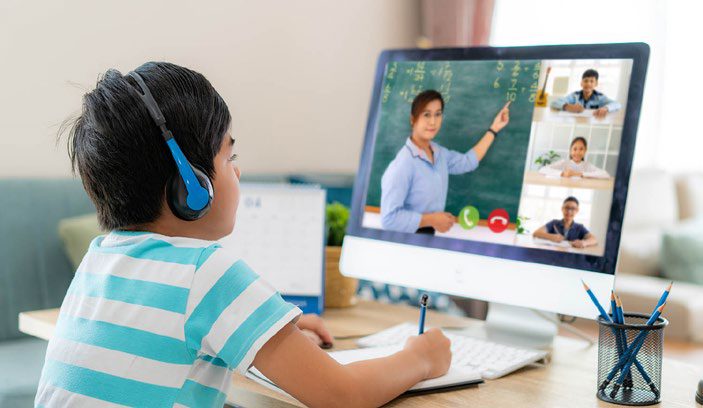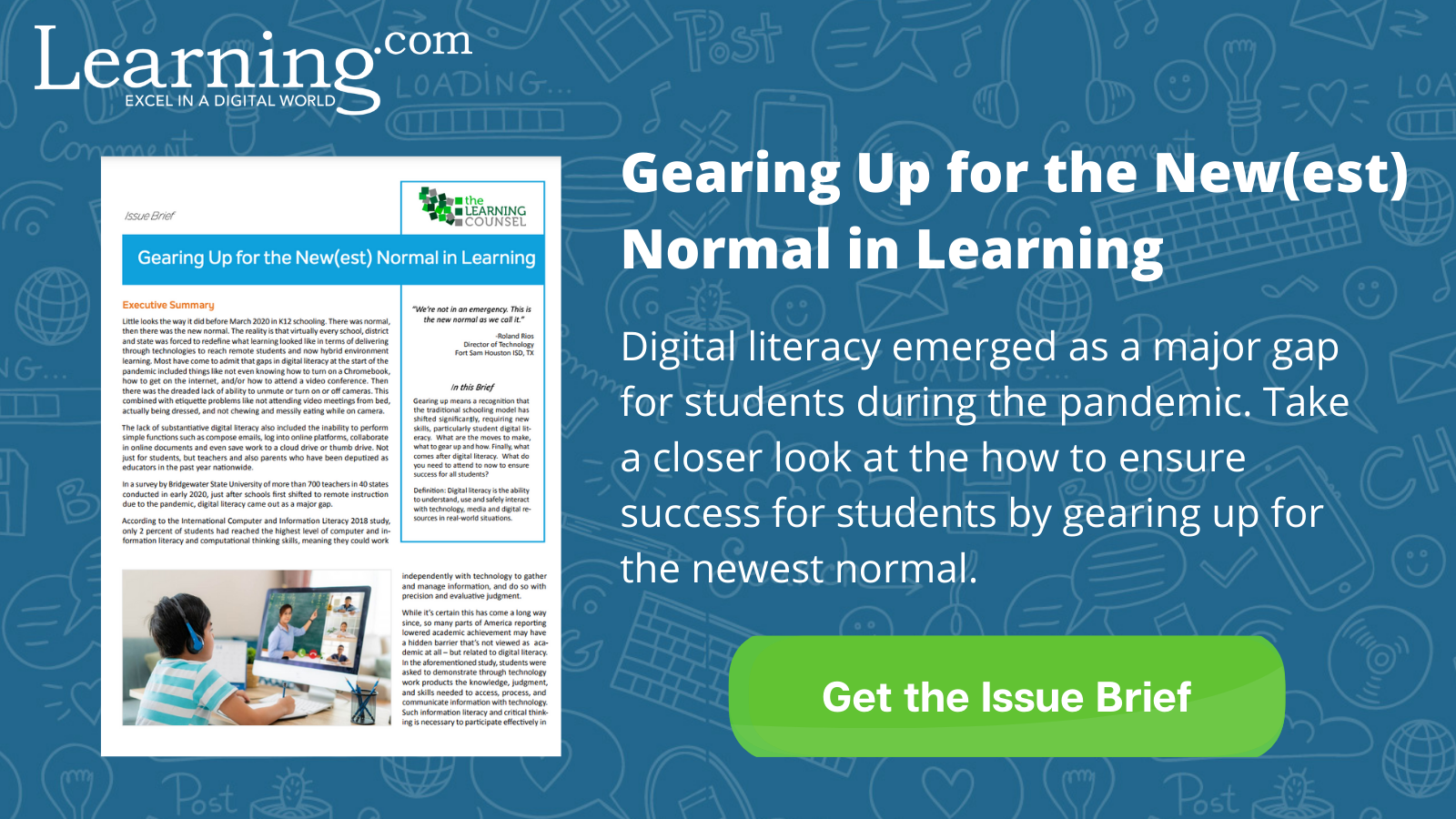We now expect students to proficiently navigate multiple systems and produce texts, digital work products and communications in a variety of digital modes. These skills are now the baseline, and they bring digital literacy to the forefront because what appears to be a student’s academic shortcoming or learning loss, may actually be a gap in digital skills needed to convey their true understanding.
Gearing up for the new(est) normal means recognizing that the traditional school model has shifted significantly, requiring new skills, particularly in digital literacy. What’s more, this newest normal presents often overlooked challenges for both students and teachers.
Learning.com is proud to share this The Learning Counsel paper that gives concrete steps to help educational leaders and teachers:
- See the issues
- Identify what to gear up
- Know how to gear up

Christine Byrd
Author at Learning.com
Christine has over 17 years of experience as an award-winning writer, thorough researcher, detail-oriented editor, and communications strategist. She specializes in providing internal and external communications for corporate, academic and nonprofit leaders.
Further Reading
Integrating AI Into Your Curriculum for K-12 Education
Find out how AI curriculum can transform K-12 education, boosting engagement and fostering critical thinking. Get started with essential insights and examples.
Teaching AI: Ethical Considerations for High School Students
Teaching AI in high schools comes with ethical questions. Discover key considerations for educators introducing AI to young learners
5 Useful AI Tools for Teachers in 2024
Looking for the best AI for teachers? Check out these 5 top AI tools in 2024 that can transform your teaching experience and save you time





